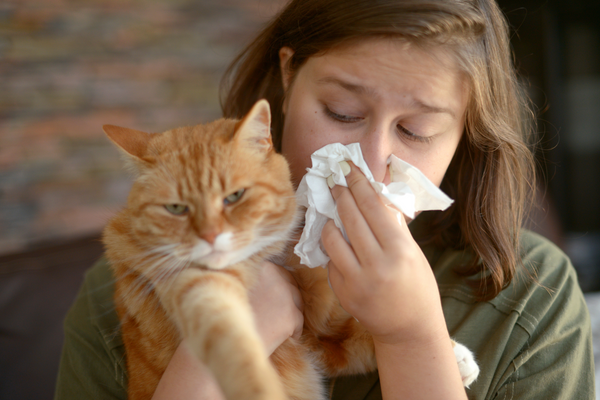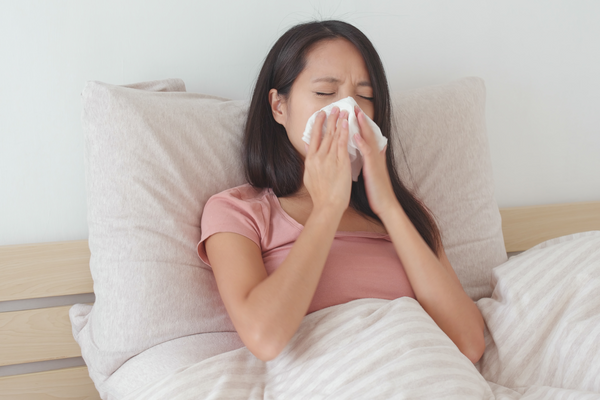Is Your Laundry Detergent Toxic?

Although your clothes might smell as fresh as a summer breeze, the reality is that many big brands of laundry detergent contain harmful chemicals which can lead to negative health effects and have disastrous consequences for the natural environment. Lurking in plain sight, common household laundry detergents (often packaged in brightly-colored jugs) are loaded with toxic chemicals that can even seep into your bloodstream. If you use a leading brand of detergent, there is a good chance that residual laundry chemicals are on your body as you read this. Research is linking many of these chemicals to contact dermatitis, hormone imbalance, endocrine disruption, respiratory dysfunction, and even cancer.
Let’s look at just a few of the toxic ingredients found in leading store-bought brands of detergent.
1,4-dioxane
This chemical is often used as a solvent in big brand detergents. According to the U.S. Environmental Protection Agency (EPA), exposure to 1,4-dioxane may result in nausea, drowsiness, headache, and irritation of the eyes, nose, and throat. 1,4- Dioxane is readily absorbed through the skin, lungs, and gastrointestinal tract. The EPA has classified 1,4-dioxane as a Group B2, probable human carcinogen. In addition, the National Institutes of Health (NIH) has warned that 1,4-dioxane is “reasonably expected to be a human carcinogen”, because it has been repeatedly shown to cause cancer in animal studies. It is also known for causing kidney, liver, and nervous system damage. Preliminary research is showing that it accumulates in the body over time. It also accumulates in the environment, in a manner similar to the infamous DDT pesticide.
Nonylphenols (NP), Nonylphenol Ethoxylates (NPEs), & Nonoxynols
Often found in detergents, fabric softeners, dryer sheets, and scent boosters, NP, NPEs, and Nonoxynols are the most widely used members of the larger alkylphenol and alkylphenol ethoxylate family of non-ionic surfactants. They are produced in large volumes, leading to widespread release to human contact and in the ocean.
NP has been found to be persistent in the aquatic environment and is highly toxic to aquatic life. NP's main use is in the manufacture of NPEs. NPEs are used in a wide variety of industrial applications and consumer products. NP has been detected in human breast milk, blood, and urine and is associated with reproductive and developmental effects in rodents.
NPEs are widely used in large quantities in big brand laundry detergents, personal hygiene, automotive, latex paints, and lawn care products, that lead to releases to Earth’s waters.
NPEs can enter the body by inhalation of air containing clothes dryer exhaust, ingestion of contaminated food or water, or by dermal (skin) contact with products containing nonylphenol ethoxylate. Many are carcinogens or endocrine/hormone disruptors, capable of causing allergic reactions, skin rashes, cancer, and asthma or other respiratory issues.
Optical Brighteners
Optical brighteners, or optical brightening agents (OBAs) are synthetic chemicals added to detergent beads to make laundry appear whiter, brighter, and cleaner. OBAs use the process of fluorescence to trick your eyes into believing your clothes are whiter and brighter than they actually are. Many optical brighteners cause allergic reactions and/or rashes when in contact with skin. Some are documented carcinogens and hormone disrupters and are highly toxic to marine life.
Fragrance
The term “fragrance” on a product label represents an undisclosed mixture of various toxic chemicals and ingredients, added to provide an appealing synthetic scent, or (more often) to mask the odor of chemicals in product formulas that are intrinsically unpleasant, such as harsh surfactants, which can often smell like rotten eggs. Thanks to the Fair Packaging and Label Act of 1966, the ingredients that make up fragrances are considered trade secrets. Because of this loophole, companies are allowed to use the generic term “fragrance” rather than being transparent and telling the consumer what’s really in the product. Did you know that fragrance products can contain hundreds, or even thousands of undisclosed chemical ingredients? And that these unlisted ingredients often include allergens, carcinogens, respiratory irritants, endocrine disruptors, neurotoxic chemicals, and environmental pollutants?
Alarmingly, once you start looking for it, you’ll quickly realize this toxic mix of ingredients known as “fragrance” is added to nearly every product on the market. Fruity, floral, musky – common household products from laundry detergent and cleaning products to lotions, shampoos, cosmetics, candles, and even diapers and baby wipes, all contain unspecified fragrance.
In addition, many people suffer from sensitivity to synthetically fragranced products. The fragrances and perfumes added to laundry detergent could trigger an allergic reaction known as allergic contact dermatitis. This condition occurs when a person who is allergic to the chemicals that make up synthetic fragrances comes into contact with the allergen. The areas of the body touched by the allergen will experience allergic reaction symptoms like itchy skin, hives, and red rashes. If clothes and bedding are washed in the scented detergent, the person with a fragrance sensitivity is essentially covering their entire body in the allergen they are allergic to. Naturally, the skin is going to react.
How to Avoid Toxins

In short, to answer the question of whether or not your laundry detergent might be toxic? If you currently use a leading brand of detergent, the answer is likely yes. Many regular brands of laundry detergents are toxic both for humans and for the environment. To be proactive about your health and the well-being of the planet, choose to use safer products in your home and around your family. Don’t use products with harsh, toxic chemicals or mystery ingredients.
The Ecology Works is a class apart. We provide an Anti-Allergen Laundry Detergent that contains green and skin-friendly ingredients which, at the same time, don’t compromise with cleanliness. Our Anti-Allergen Laundry Detergent is recommended by allergists and dermatologists, with a gentle plant and mineral-based formula, that removes dust mite allergens, pet dander, mold, mildew, and smoke, as well as stubborn stains. It’s also free of perfumes, dyes, enzymes, and other allergy triggers, while being 100% biodegradable and a superb environmental choice.
We, at The Ecology Works, are passionate about the environment and the health and well-being of people. Our Anti-Allergen Detergent uses the most people-friendly and planet-friendly ingredients and is free from toxins and gentle on the skin while being tough on dirty laundry.
Learn more about reducing toxins and allergens in your home. If you have any questions, please feel free to Contact Us or message us on Facebook. We’re here to help.





